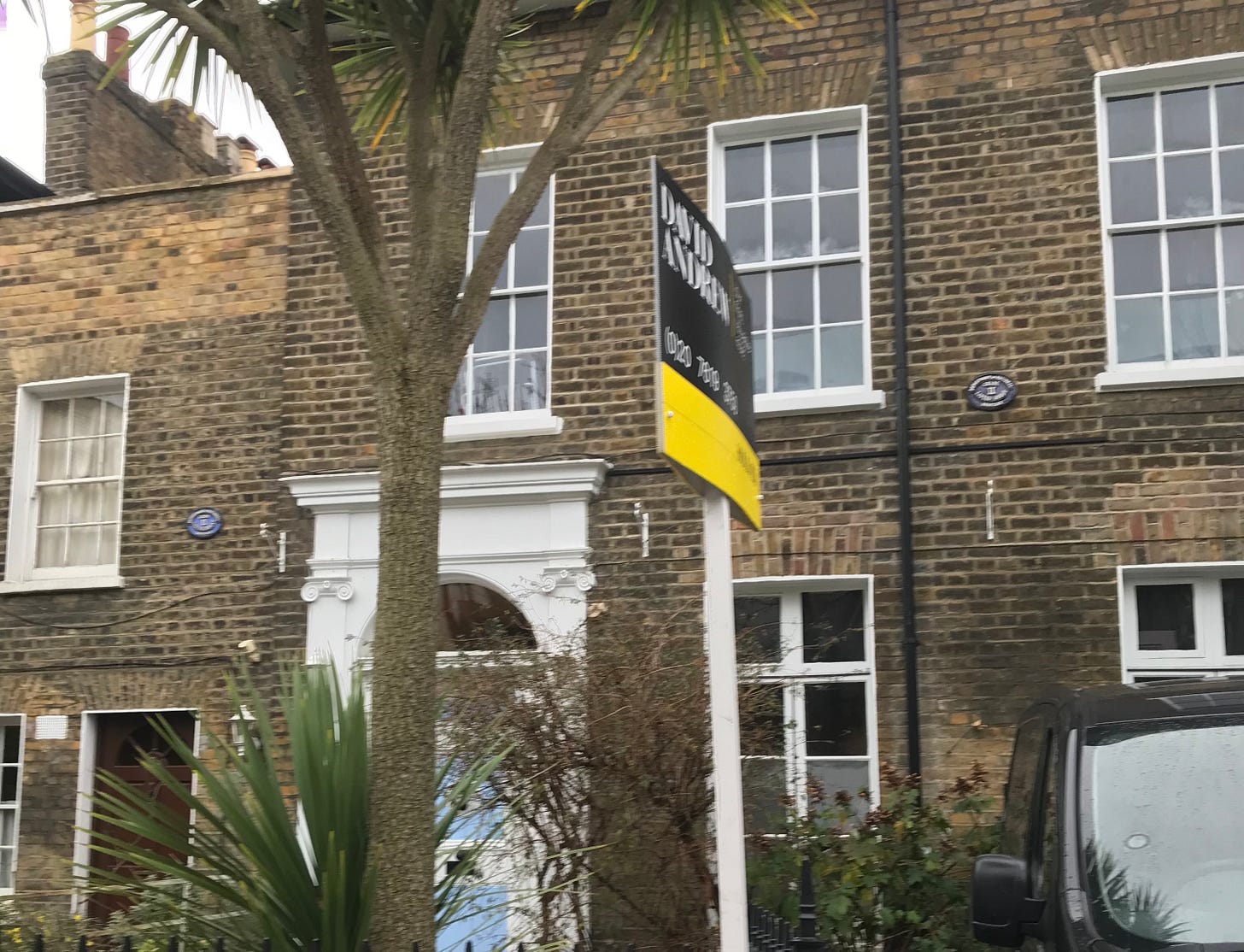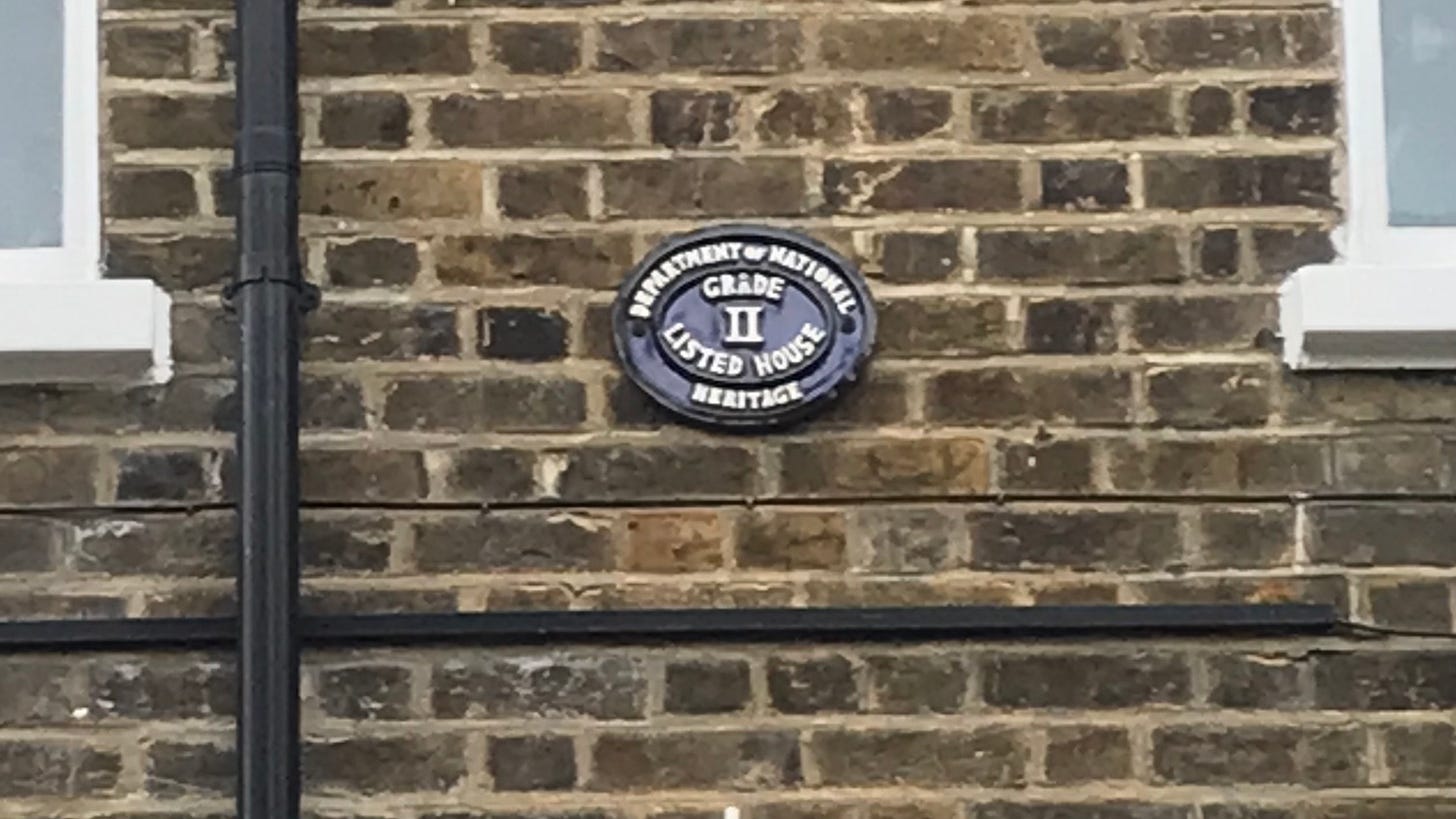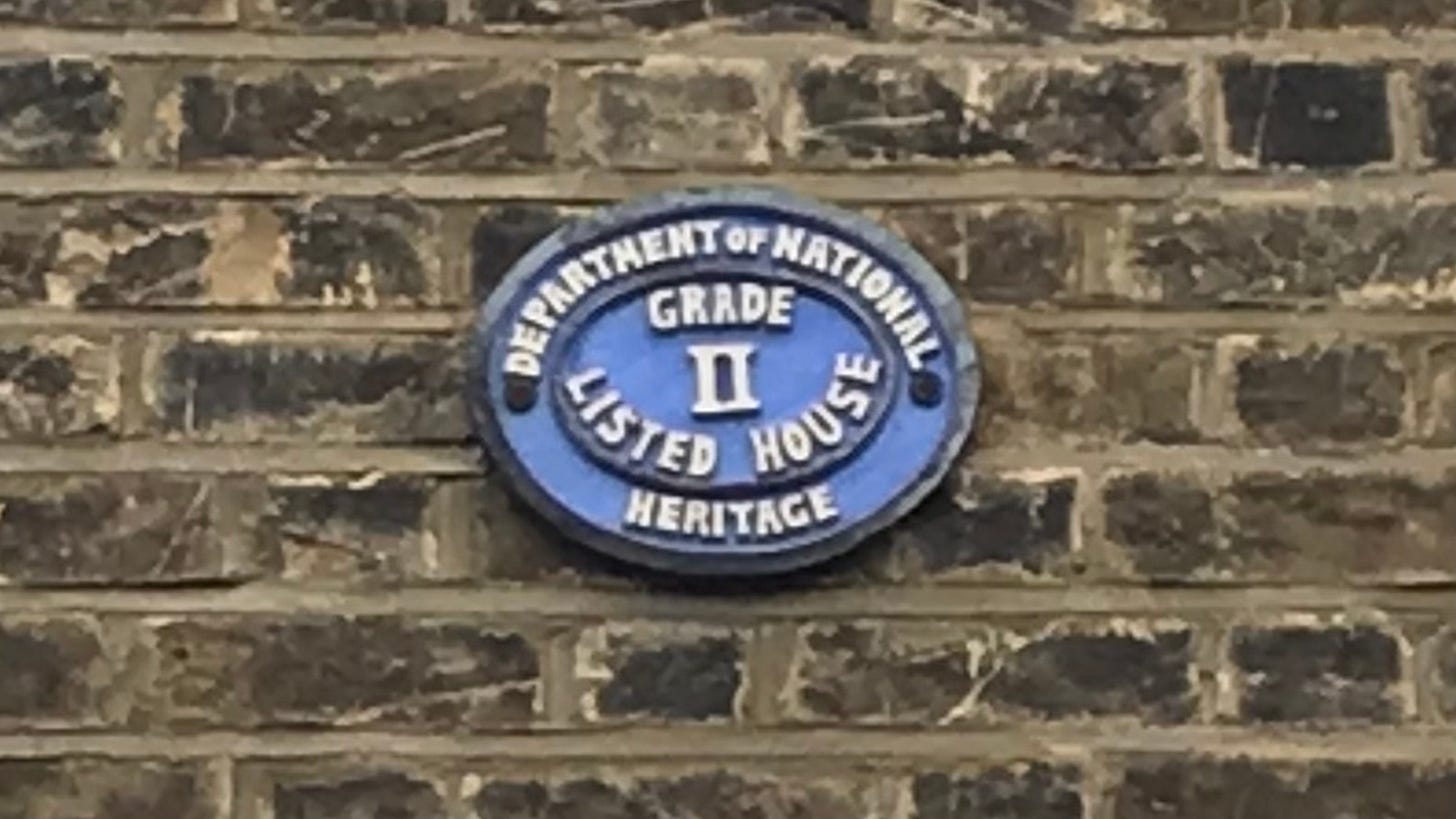In central Brixton, near the library and facing the Town Hall, there is a huge ghostsign advertising Bovril*, a beef extract product that is still available today.
Bovril was created by John Lawston Johnson in 1897 – its popularity and success enabled him move into and adapt a house that can be found a few stops along the railway line from Brixton, at Kingswood House, Sydenham Hill. Indeed the house is better known as Bovril Castle and is today home to an Kingswood Arts centre. I went there recently as part of an organised guided tour and found it to be an absolute delight...
Opposite Brixton station entrance in Atlantic Road there's a different type of ghostsign showing that this used to be a branch of Stone (television and radio). It's been looking like this for over 15 years and I'm always surprised that no one has yet simply wiped away the dirt:
Up to the platform. Brixton station is lovely. I love the fancy wooden canopies and the metalwork:
Sydenham Hill station is cute but very strange. From the lovely footbridge there's an evocative view into tho tunnel heading southward:
On the southbound platform there's a tiled artwork created by young people that appears to be missing some elements. On exiting the station, there's no proper street – instead you make your way up this stepped ramped path that leads into a post-WW2 housing estate. I hear that the station had originally been built merely to serve Kingswood House, there being nothing else in the immediate vicinity.
The shops in Seeley Drive were all closed or empty bar one. It all seemed very quiet and spooky. Where were the locals?
I spotted some creative graffiti on what I assume used to be a fountain in the grounds of the Kingswood House. I was early for the tour so I walked around the house and looked back at it from near the benches by the kids' playground. It's easy to see why it's called a castle.
Ooh... the guide opened the doors so I headed over to the house and spotted an intriguing maker's plaque within a rusty crackled panel that I assume allows access to the basement. The plaque is for John Tann of 11 Newgate, London.
The name rang a bell and later I recalled I'd seen the same name on a wall in Hackney advertising a family business that made security products, specifically safes and vaults. Indeed the Tanns are credited as making the very first safe –
more here which makes for fascinating reading if you have an hour or so!And so into Kingswood House. The room our tour started in still retains some marvellous old plasterwork on the ceiling, said to be Tudor era, though I am not sure why depictions of Alexander and Hector Troy are repeated across the space. Perhaps they simply denote power and leadership?
The fireplace surround is also impressive, both the wood and the plasterwork within. In fact the whole building is littered with architectural details of the most marvellous kind, the guys at Kingswood Arts having spent ages painstakingly restoring the building after years of neglect in the latter part of the twentieth century. This includes a lovely marble floor in the conservatory (which I completely forgot to photograph) that was covered in carpet which had been glued directly onto the marble. Crazy!
Here follows some more pics which show the parquet floors, panelled walls, a sun damaged tapestry and a wonderful galleried room.
Do pop in and have a look. Kingswood Arts centre is a crowdfunded facility for arts of various kinds and is also available for hire for events. There's also a good cafe there too.
*There also a few lines on there advertising Butlin's holidays, but people rarely notice that!






























